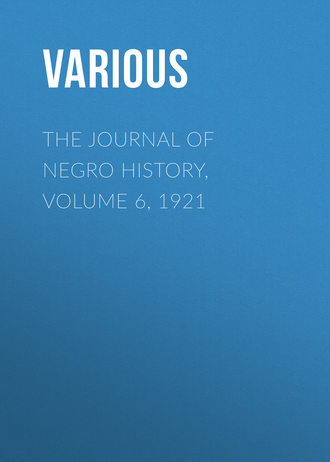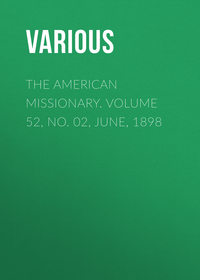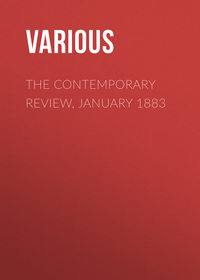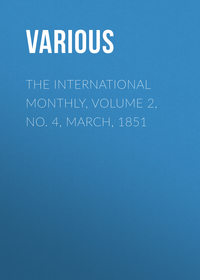 полная версия
полная версияThe Journal of Negro History, Volume 6, 1921
These preceding views, however, were not at all the general opinion regarding the remedies to check the migration, for there was another element, representing the old South, which did not consider them with any degree of favor. It viewed the movement as a specific and temporary thing, and held that had there been no floods during 1916, and if the boll-weevil had not ravaged the cotton plantations, there would have been no migration, for the Negroes never would have been induced to go North. It alleged that the Negroes did not want more money, if the getting of it meant harder work; and that what the Negro needed was a soft climate. It also asserted that the relations between the two races were never so good as they were then. Hence this element favored standing aloof and allowing the movement to stop of its own accord.531
Notwithstanding this view of the situation, there prevailed the opinion that the remedy for checking the exodus lay in the adoption of those measures promotive of sympathy and kindness, and forthwith plans were effected with the aim of inducing the Negroes to remain and of inviting others who had departed to return to the South. The following are some of the chief measures which were adopted to achieve this end: (1) A general and substantial increase in wages; (2) movement on the part of the farmers to deal more fairly in business matters with the Negro tenants by making clear at the outset the terms of all contracts, and by keeping strict accounts and making prompt settlements with them; (3) the correcting of certain former abuses such as short weighing of coal, discounting of store checks, and unfair prices in the commissaries; (4) instituting of crop diversification in order to keep the laborers supplied with work the year round; (5) better housing; (6) better school conditions; and (7) the drawing closer together of the two races through the medium of county meetings for the study of problems growing out of racial relations. A typical example of this last-named policy is the "Community Congress" plan in Bolivar County, Mississippi. The essential feature of this body is a representative general committee composed of twenty-five white planters and business men, and five Negro leaders from the five supervisors' districts within the county. The function of this organization is to consider and offer solutions of any and all important problems pertaining to the community. There is, moreover, the Farm Extension Bureau of the Chamber of Commerce of Memphis, Tennessee, which was organized for the purpose of conducting educational campaigns to improve agricultural and rural conditions. This organization has extended its work from Tennessee into Mississippi and Arkansas, and has adopted the policy of employing Negroes to act as demonstrators among farmers of their own race in order to furnish the Negro farmers with greater incentive to become more skilful and industrious in their vocation.532
Since we have seen the attitude of the white leaders of the South toward this movement, it might also be of interest to know what was the view of the Negro leaders in regard to this exodus of their race. In the first place, many of the local leaders in the South were much opposed to this movement, but hesitated to give outward expression to this for fear of rebuke from members of their race. Hence, their policy was that of maintaining silence about the whole matter. On the other hand, the editors of some of the leading Negro papers of the South were somewhat outspoken and were more or less inclined to be in sympathy with the movement. They nevertheless expressed regrets that the Negroes were leaving the South, but this did not in the least move them to do anything to help check the movement. They took the position that the migrants had not been given justice in economic, political, and social affairs, and that, therefore, they had no just grounds on which to base appeals to them to remain in the South. In fact, in view of these adverse circumstances, they felt that the Negroes could not be blamed for moving to the North.533
Other leaders, however, especially those in the North, were more positive and frank as regards their attitude toward the movement. These may be roughly divided into two distinct classes, namely, the conservative and the radical. Those of the former class adhered largely to the view of Tuskegee Institute, which fosters the traditions of Booker T. Washington.534 They advised the Negroes to remain in the South on the ground that it was there only that the Negro could become a landholder, and that there were chances for him to become a real estate owner almost at his own will. Some in this class felt also that the Great War would soon end and that after that the country would be flooded by immigrants from Europe, who would doubtless deprive thousands of Negroes of work in the North. They therefore counseled the Negroes to stay at home and to keep possession of their property, especially their property in land.
The radicals, on the other hand, who insist on equal rights for the race, boldly advised and urged the Negroes to come North. When this exodus was well under way one of the members of this class, Dr. W. E. B. Du Bois, spoke as follows: "There are not jobs for everybody; there is no demand for the lazy and casual; but trained, honest Negro laborers are welcome in the North at good wages just as they are lynched in the South for impudence. Take your choice."535 Furthermore, others of this class, believing that immigration would not be a factor in the labor situation for a long time to come, likewise urged the Negroes to continue moving to the North. Their desire was to see the Negro population increase its size in such great proportions through this migration as to afford it the opportunity to exercise in the North economic and political power hitherto unknown.536
Chapter VI
THE EFFECTS OF THE NEGRO MIGRATION ON THE NORTH
As the migration had its effects upon the South, it likewise influenced conditions in the North and West; but in the latter cases these effects were somewhat different from those produced upon the former section. It is almost obvious that these two sections could hardly escape without being affected, since they were suddenly invaded by a multitude of newcomers who belonged to a race different from that of the dominant elements in their respective populations. In these places, moreover, these migrants were seeking for the most part better opportunities in order to enhance their progress in the struggle for existence, and in so doing created new situations which undoubtedly had decided effects upon these sections.
The first noted effect was a tremendous increase in the Negro population of some of the large cities and industrial centers of these sections. It is estimated that this increase in some cases ranged from one to four-fold. For example, the Negro population of Detroit, Michigan, jumped from 5,751 to 41,532 by 1920. In 1917 Pittsburgh, Pennsylvania, showed an increase of 47.1 per cent in its Negro population. During the same decade Philadelphia added 49,632 to its black population; and it is reported that 25,000 Negro migrants went to Cincinnati, Ohio,537 and 52,000 to Chicago, Illinois.538 The census of 1920 shows that the increase in the Negro population of Cincinnati during the preceding decade was 9,987 and that of Chicago 65,491.
Notwithstanding this, these sections were certainly much gratified at this influx of Negroes, because it was meeting the unprecedented demand for labor. At this time the Negroes were sorely needed for economic purposes, and nothing was done to obstruct their coming in. That this was the case the following statement will show: "To-day the shutting down of immigration, due to the war," said The New Republic, "has created just such a demand for the Negroes. Colored men who formerly loafed on street corners are now regularly employed. Negro girls who found it once difficult to obtain good jobs at domestic service have leaped into popularity. The market for labor has taken up all the slack. There is a demand for all, for skilled workers, unskilled, semi-employables, Negroes. The employment agencies cannot meet the demand. Construction camps which formerly relied on Italian or Polish laborers now seek to secure an alternative supply of Negroes. Formerly the big contractor in the North could pick a few hunkies from a long line of eager applicants for work. He could get Poles, Italians, Greeks, in any number.... To-day he is willing to take black men, and finds it hard to get even them."539
This most unusual demand for labor, coupled with the necessity of having to be met wholly by thousands of Negroes from the South, wrought a considerable change in the labor mores of the North. In its employment of these laborers the North was compelled to adopt a policy hitherto unknown. On this point let us proceed by referring to the following testimony. "Until recently," said a contributor to The Living Age, "the Negro in the northern cities was restricted to certain occupations that are unskilled and outside the range of organized labor. To-day he is being welcomed on the farms of New England and the Middle West and in the industrial centers, where hitherto the employer has not wanted him and the white workman has regarded him as a dangerous intruder. In Chicago, Cincinnati, Pittsburgh and many other cities large numbers of Negroes are found in factories and workshops where until lately the Negro laborer was never admitted even as a visitor. This is especially true of the iron and steel works and the factories, while many thousands have been absorbed by the railroads and street railway companies."540
While the North was very desirous of the Negro migrants in order to utilize their labor, moreover, it was, nevertheless, ill-prepared to provide them proper dwelling places. The rush of the Negro laborers to this section suddenly overtaxed the capacity of the habitations alloted to Negroes, thus causing a demand for houses which far exceeded the supply. The result of this was the bringing on the hands of the North a serious housing problem which required immediate solution. The railroads were the first to attempt to meet the situation by adopting the method of erecting camps to house the large number of single men who had been imported from the South. These roads were the Pennsylvania, Baltimore and Ohio, New York Central, and Erie. The camps constructed by the Pennsylvania were wooden sheds covered with tar paper and equipped with sanitary cots, heat, bath, toilet and wash-room facilities, separate eating room and commissary. This road built thirty-five such camps, each capable of accommodating forty men. The camps of the other railroads consisted of freight cars and passenger coaches converted into sleeping and eating quarters for the men. In some cases old houses were renovated and used for the same purposes. Camps were also used by the large steel companies of Pennsylvania to house their workers. These were largely old barns and old houses which were transformed into living quarters. They were reported to be inferior to the railroads' camps in matters of equipment and sanitation.541
The most difficult part of this housing question, however, was that of community housing, the problem of supplying men with families with adequate living quarters. An investigation of the housing conditions among migrants of this type in twenty cities of the North and West showed that everywhere this problem was very acute. In few cities, where the Negro migrants were mixed in with the whites, the former were provided with fairly satisfactory housing conditions, but were compelled to pay comparatively high rents for least desirable quarters. Exceptions, nevertheless, were found in these places where the invasion of white districts by Negro families had resulted in the moving out of the white residents. Here, very desirable houses for Negroes were available, but at rental rates far in advance of those formerly paid by the whites.542 The small number of available houses and the high rents asked for the same, moreover, caused the Negroes to locate themselves within restricted bounds of habitation which resulted in a great deal of overcrowding among them. There were found numerous cases in which there were too many persons for each room and too many for each bed. Instances in this regard will be cited farther on in this dissertation.
Another effect of the Negro migration was that of increasing the friction between races in certain parts of the North and West. This effect, however, was not as extensive as it was once thought to be; for in many instances Negroes worked and lived peaceably side by side with the whites. Nevertheless, there were found numerous cases in which racial friction operated to bring about strained relations between the two social groups. These manifested themselves in the form of refusals on the part of some employers to hire Negroes, because white laborers objected to working with black men, and in the form of emphatic protests of white residents of certain industrial towns—especially in the steel districts of Pennsylvania—against the bringing in of Negroes to live among them. This neighborhood prejudice existed also in a number of the cities of the North and West, and was, no doubt, the source of much of the trouble between the races.543 The most bitter form of racial friction occasioned through the migration was that which grew out of economic rivalry and competition for jobs. This competition was brought about by a policy pursued by Northern employers, the practice of deliberately importing Negro laborers from the South to replace white workers who went on strike. This naturally served to fan the flames of hatred of the white workers against the Negroes, and actual expressions of this were seen in the serious race riots which followed.
An example of a race riot which grew out of this economic competition was that which occurred in Philadelphia, during the early part of 1917.544 There the white workers in a large sugar refinery went on strike, whereupon the owners of the plant attempted to break the strike by the use of Negro laborers. The latter were attacked violently by the displaced white laborers, and the result was a race riot in the course of which one Negro was killed, and several others were wounded. It is said that the whites resented this substitution of Negro labor for theirs, because the former was being used to keep down wages and thus destroy unionism.
Another typical example of such a race riot is that which took place in East St. Louis, Illinois, in July, 1917, during which more than a hundred Negroes were shot or maimed. Many of them were fatally wounded, five thousand of them were driven from their homes, and several hundred thousand dollars worth of property was destroyed. The origin and cause of this little racial war seemed to have been this: In 1916, 4,000 white men employed in the packing plants went on strike and, in retaliation, the employers of these plants brought in Negroes to work in the places of the strikers. When the strike ended, during the following year, Negroes were still retained as employees in these plants, whereas many whites, who struck, were refused their former jobs. The trade unions then realized the power in this vast resource of imported labor, and, therefore, took steps to check it by appealing to the city authorities to restrain employers from transporting Negroes from the South. In their appeal they threatened to take action themselves if the city officials did not do so. It happened that the latter failed to act, and, therefore, the unionists and their sympathizers, true to their threat, took complete control of the situation and resorted to mob law as a means of solving the problem.545
Besides these preceding cases, other riots occurred, but these were due to causes other than economic competition. One of these, which took place in Chester, Pennsylvania, in 1917, seemed to have been due to natural friction and conflicts between the worst elements of both groups in the community.546 During the same year, Homestead, Pennsylvania, barely escaped a race riot due to ill feeling between the two groups which had been brewing for some time.547 In Newark, New Jersey, there was a race riot in which four men were wounded, probably fatally, while thirty-three others received slight wounds. This outbreak was of such magnitude that 150 police reserves were required to quell it. It has been reported that it was precipitated by a fight which resulted from a dispute over the amount of money wagered in a dice game conducted by men of both races.548 There were riots during the summer of 1919, in Washington, D. C., Chicago, Illinois, and Omaha, Nebraska; but it is difficult to say to what extent the recent exodus was responsible for these outbreaks. It seems highly probable, however, that the great increase in the white population of Washington and in the Negro population in Chicago, respectively, as a result of movements of our population, contributed much towards intensifying the ill feelings already existing between the two groups.
Furthermore, the coming of the Negroes to the North in such large numbers and their employment in trades and industries hitherto closed to them brought to the front the old problem of the Negro and the labor unions. With few exceptions, the Negroes have generally been barred from membership in the unions on account of race prejudice; and this has especially been the case in the North where the unions are oldest and most powerful and influential in labor affairs. Here white union laborers have manifested their prejudice by repeatedly refusing to work with Negro employés. This naturally prevented employers from utilizing Negro labor, and the outcome of this policy was to exclude the Negroes from the better paying positions and to push them almost wholly into those avocations which are unskilled or unsettled.549 The Negroes have thus been forced into positions where generally they must work for less pay than the unionists, and because of this the latter have branded Negro laborers as "scabs," notwithstanding the fact that the doors of the unions were closed to them. Unwilling to bear this stigma, which made them an object of contempt in the eyes of trades unionists, Negro workers made efforts to organize themselves and drew up petitions requesting admission into the unions. These efforts, however, have been again and again made fruitless by the local labor unions which discriminate against men on account of race and color. When this matter has been referred to the national and international councils these latter bodies have held that their constitutions recognize no such discriminations, but at the same time acknowledged their inability to control these local unions. These locals, therefore, have been a great obstacle to the unionization of Negroes.550
Evidently this decree of the American Federation of Labor was not obeyed by all its affiliated internationals, because at its next annual meeting, held in Montreal, Canada, June, 1920, the question of Negro admittance to membership in unions figured as a conspicuous part of its proceedings. On this occasion the discussion of this question arose out of allegations made by delegates, mainly Negroes from Northern States, which accused the Brotherhood of Railway Clerks (whose constitution provides for white membership only) of having refused membership to Negro freight handlers, express and station employees. At the same time, demands were made to the effect that the Federation should change this state of affairs. The tense moments of the convention were reached when the Organization Committee, to whom the matter had been referred, submitted a non-concurrence report, taking the position that the Federation had no authority over the constitution of an affiliated union. This report naturally evoked a very heated controversy between the Negro delegates and their white sympathizers and those whites who were opposed to giving Negroes membership in the labor unions. The Federation, however, rejected this report, and for the first time in its history threatened the autonomy of an affiliated union by first demanding, by several motions, that the Brotherhood of Railway Clerks abolish the color line in its constitution or forfeit its charter in the Federation. None of these drastic motions prevailed. Finally, a modified motion, requesting, rather than demanding, this brotherhood to eliminate from its constitution the words "white only" and give the Negro freight handlers, express and station employees full membership, was carried. Following the adoption of this motion, Chairman Duncan spoke thus, "This, I believe, will settle the Negro problem in our organization for all time. Our affiliated unions must now understand that the color line is abolished."551
This second act of the American Federation of Labor is, indeed, another step forward in its efforts to settle the problem of the Negro and the unions; but that it will settle this problem for all time is very doubtful. Certainly, there are great obstacles in the way of an early solution of it. Chief of all these obstructions is the force of racial prejudice, which has demonstrated again and again that in spite of laws to the contrary it is powerful enough to devise and put into effect plans whereby its desires may be accomplished. Furthermore, when one considers the structure and foundation of the American Federation of Labor he wonders whether it has authority over its affiliated unions sufficient to compel them to abide by its decrees. The American Federation of Labor is a loose federation of national and international unions—a federation of independent unions. Each national or international, though it receives its charter from the federation, is autonomous, free to withdraw from the federation, and it possesses all the machinery necessary for an independent existence. To this end, it is self-governing, having its own constitution which grants it vast powers. Local unions and other subordinate organizations are created by it. By means of charters and constitutional provisions it actually determines membership and membership conditions and privileges, the functions of locals, their officers and duties, the discipline of the members, and the general conduct of the affairs of the local. Thus, while theoretically the local union is the economic unit of unionism, practically the national or international is the unit, for it and not the local is of primal importance in the American Federation of Labor.
On the other hand, the powers of the American Federation of Labor, though very broad and potent, do not seem to have scope and force enough to permit this body to interfere with much effect in the local affairs of the national or international unions, because of the large degree of sovereignty possessed by these organizations. These bodies, therefore, are at liberty to do things which often are detrimental to the best interests of trades unionism. Here, then, it is seen that the great obstructions to Negro membership in the unions are not the locals but rather the national or international unions, because the locals are entirely responsible to the latter bodies, which are in turn accountable to the Federation. The American Federation of Labor is, therefore, confronted with the difficult task of compelling its nationals or internationals which discriminate against Negroes to change their constitutions and grant Negro laborers full membership in their unions. Can it or will it exert sufficient pressure on these organizations to bring this to pass? Its most potent coercive measure is the revoking of a union's charter, and the question is will it have the courage to employ this weapon to secure economic justice for the Negro, or will it hesitate to do so? By its action at its last annual meeting, when it preferred to request the Brotherhood of Railway Clerks to eliminate racial discrimination from its constitution and give the Negroes membership in its unions, rather than demand it to do so or forfeit its charter, the American Federation of Labor indicated that either it was doubtful of the extent of its authority over its affiliated international unions or that it is as yet unwilling to deal sternly with them.
Despite these difficulties, the Negro laborers are not giving up the fight for their admittance into the unions. In various ways they are still opposing these forces which are barring them from these organizations. In the meantime they are availing themselves of the aid of certain Negro social agencies which have undertaken to supply the Negro workers with that industrial leadership which they lack by being outside the labor unions. These agencies are the Young Men's Christian Association, Young Women's Christian Association, and the National Urban League. These bodies function through their respective industrial secretaries in cities of the North and West. These agencies aim to serve the Negro laborers by investigating and cultivating new avenues of employment, to stand as a buffer between them and the white unions and furnish the leadership usually exercised by trades unionism by taking up the Negro's grievances directly with the management. That these objects may be accomplished these organizations have adopted certain methods of procedure. Most of them operate free employment offices through which from several hundred to two thousand laborers are placed per month. The Chicago, Detroit, Cleveland, and Pittsburgh branches of the National Urban League, and the Indianapolis, Cincinnati, and Columbus Y. M. C. A. branches render still broader service by studying the demand for labor and by endeavoring to persuade employers to use Negroes in new capacities. They try also to aid men to make good on the job by appealing to race pride, by holding noon shop-meetings, and by stimulating the companies to cultivate friendly relationship between labor and the management. These bodies, by acting as mediators in labor disputes, moreover, have been successful in averting or settling a number of minor strikes.552











